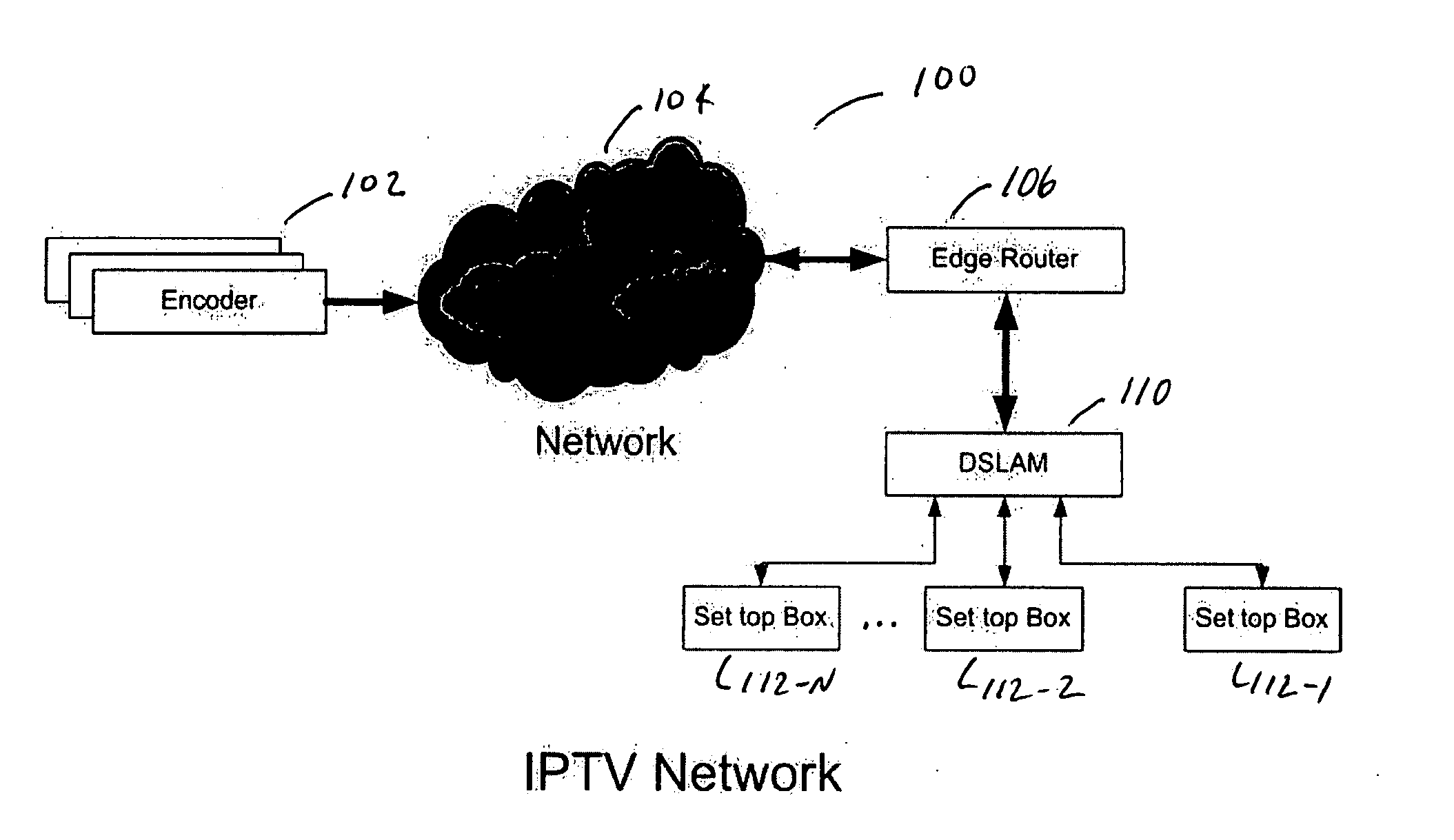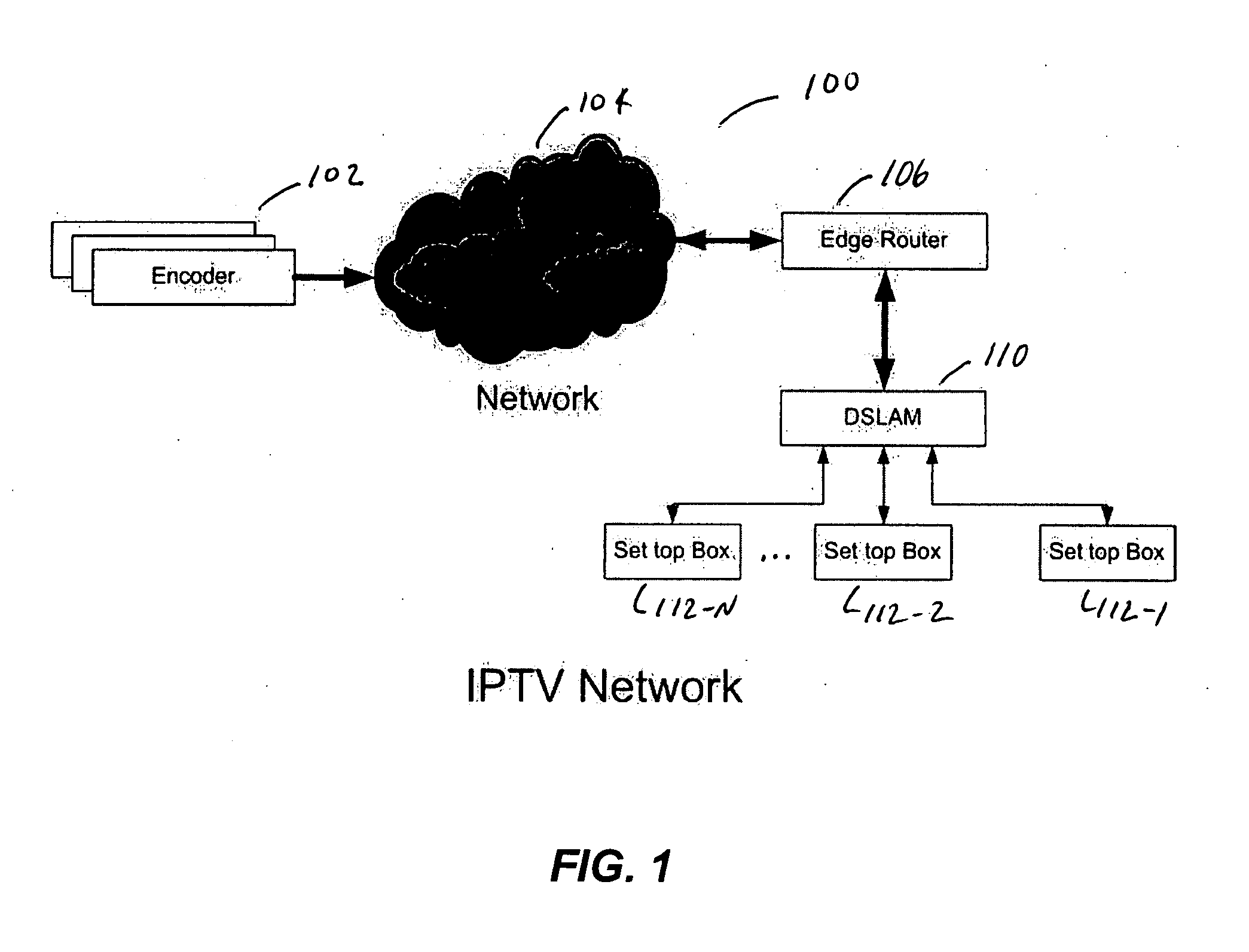Method and system for reducing switching delays between digital video feeds using multicast slotted transmission technique
a technology of multicast slotted transmission and switching delay, applied in the field of systems and methods for reducing switching delay between digital video feeds, can solve the problems of introducing significant issues, unable to decode data streams, and introducing additional delays in various processing, etc., and achieve the effect of reducing switching delay
- Summary
- Abstract
- Description
- Claims
- Application Information
AI Technical Summary
Benefits of technology
Problems solved by technology
Method used
Image
Examples
Embodiment Construction
[0028] The invention provides systems, devices, methods, procedures, and computer programs and computer program products stored on computer readable media associated with a channel change request in an interaction between a server, providing video, and a client. These systems, devices, methods, procedures, and computer programs and computer program products reduce the switching delays between digital video or other media content feeds using what may be referred to as multicast slotted transmission techniques, procedures, and algorithms. The phrase slotted transmission is applied here because this approach uses controlled repeated multicast transmission of the video or other media content to reduce the video stream switch delays. These video stream switching delays may alternatively be referred to as channel changing or channel switching delays,
[0029] The problems and limitations in the conventional arts, and / or the path to a solution to these problems and limitations may be abstrac...
PUM
 Login to View More
Login to View More Abstract
Description
Claims
Application Information
 Login to View More
Login to View More - R&D
- Intellectual Property
- Life Sciences
- Materials
- Tech Scout
- Unparalleled Data Quality
- Higher Quality Content
- 60% Fewer Hallucinations
Browse by: Latest US Patents, China's latest patents, Technical Efficacy Thesaurus, Application Domain, Technology Topic, Popular Technical Reports.
© 2025 PatSnap. All rights reserved.Legal|Privacy policy|Modern Slavery Act Transparency Statement|Sitemap|About US| Contact US: help@patsnap.com



